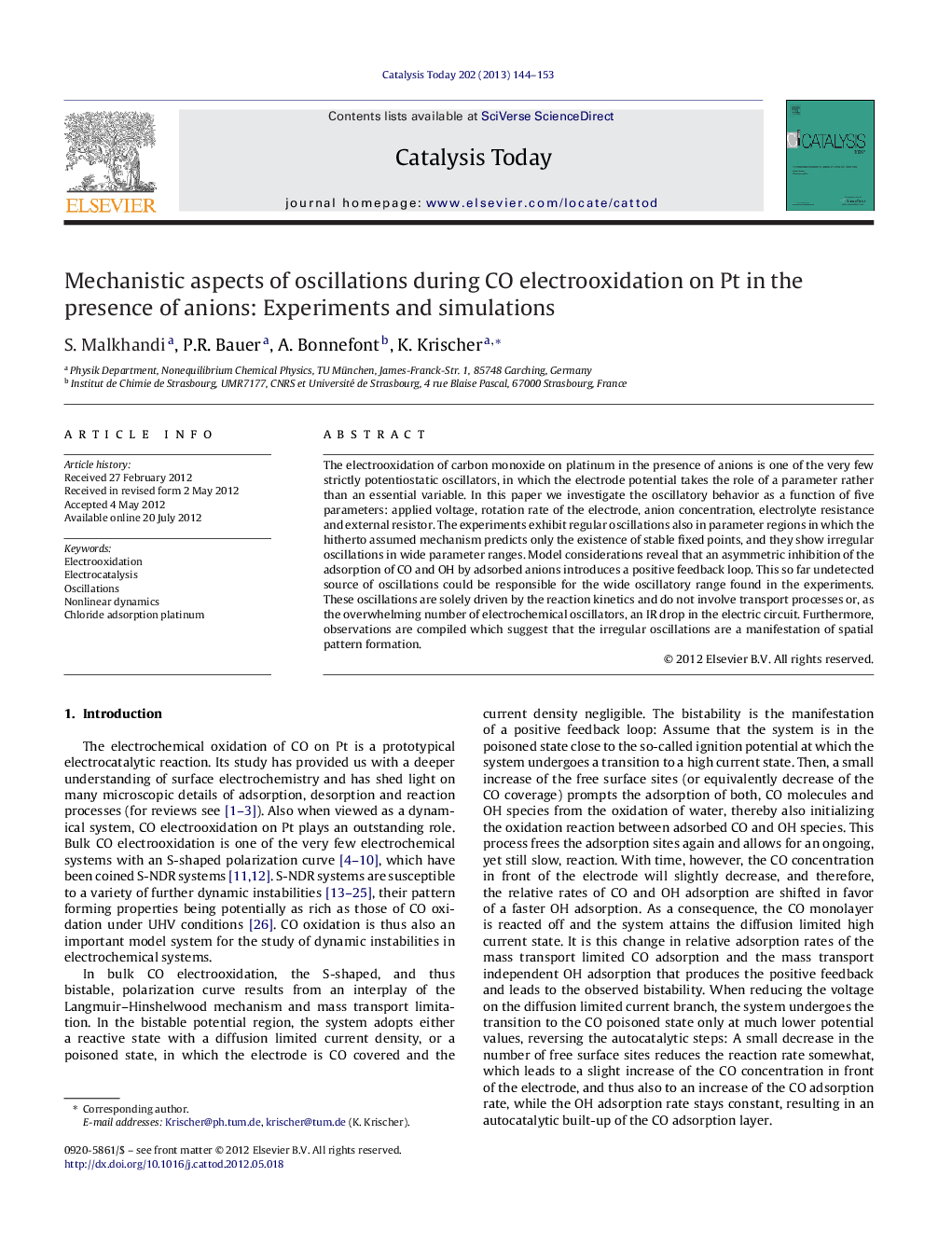| Article ID | Journal | Published Year | Pages | File Type |
|---|---|---|---|---|
| 55007 | Catalysis Today | 2013 | 10 Pages |
The electrooxidation of carbon monoxide on platinum in the presence of anions is one of the very few strictly potentiostatic oscillators, in which the electrode potential takes the role of a parameter rather than an essential variable. In this paper we investigate the oscillatory behavior as a function of five parameters: applied voltage, rotation rate of the electrode, anion concentration, electrolyte resistance and external resistor. The experiments exhibit regular oscillations also in parameter regions in which the hitherto assumed mechanism predicts only the existence of stable fixed points, and they show irregular oscillations in wide parameter ranges. Model considerations reveal that an asymmetric inhibition of the adsorption of CO and OH by adsorbed anions introduces a positive feedback loop. This so far undetected source of oscillations could be responsible for the wide oscillatory range found in the experiments. These oscillations are solely driven by the reaction kinetics and do not involve transport processes or, as the overwhelming number of electrochemical oscillators, an IR drop in the electric circuit. Furthermore, observations are compiled which suggest that the irregular oscillations are a manifestation of spatial pattern formation.
Graphical abstractGraphical abstract Figure optionsDownload full-size imageDownload high-quality image (154 K)Download as PowerPoint slideHighlights► CO electrooxidation in the presence of Cl− oscillates in wide parameter ranges. ► Oscillation regions cannot be explained with simple Langmuir adsorption kinetics. ► Asymmetric inhibition of CO and OH adsorption by Cl− causes a positive feedback. ► CO electrooxidation is thus an electrocatalytic oscillator. ► Evidence for spatial instabilities is observed.
